Did you know that pairing underfloor heating with a heat pump can cut your home’s heating energy use by as much as 50%? This remarkable statistic shows why more UK homeowners are turning to this winning combination. Not only does it slash your monthly bills, but it also transforms your home into a warmer, more sustainable, and highly desirable property. Whether you’re planning a new build or outfitting an older home for modern comfort, this guide uncovers everything you need to know about maximising efficiency and value with underfloor heating and heat pumps.
Unlocking Energy Efficiency: Why Underfloor Heating with Heat Pump is the Gold Standard
When you combine underfloor heating with a heat pump, you're creating one of the most energy-efficient ways to heat your home. This combination takes advantage of radiant floor heating’s ability to distribute warmth evenly at low temperatures, working perfectly with a heat pump's highly efficient operation. With this pairing, homeowners in the UK can expect lower energy bills, consistent comfort, and a significant reduction in their household's carbon footprint. Investing in these systems not only meets your immediate needs for comfort, but also future-proofs your home against rising energy costs and stricter energy regulations.
"Did you know that combining underfloor heating with a heat pump can reduce household heating energy usage by up to 50%?"

The Surprising Statistics on Underfloor Heating and Heat Pump Pairings
Surprisingly, studies show that homes utilising floor heating with a heat pump can achieve over 40% greater energy efficiency compared to traditional radiators. As demand for sustainable solutions grows, more property owners are seeing the tangible benefits: not just energy savings, but improved indoor air quality, better temperature control, and quieter operation. With initiatives that promote renewable heating systems, homes with these modern setups also see increased property value and eligibility for incentives. Ultimately, choosing underfloor heating with a heat pump isn’t just about comfort—it’s a powerful move toward energy independence and eco-responsibility.
- Consistent and comfortable warmth throughout every room
- Significant reductions in energy use and utility bills
- Compatibility with renewable energy sources
- Reduced environmental impact and lower emissions
- Discreet, silent operation with no bulky radiators
What You’ll Learn About Underfloor Heating with Heat Pump
- How underfloor heating works with heat pumps
- Benefits of combining underfloor heating and heat pumps
- Types of heat pumps suitable for underfloor systems
- Installation steps and cost breakdown
- Expert advice for retro-fit projects
- Common questions answered by specialists
Understanding Underfloor Heating Systems and Heat Pumps
What is Underfloor Heating?
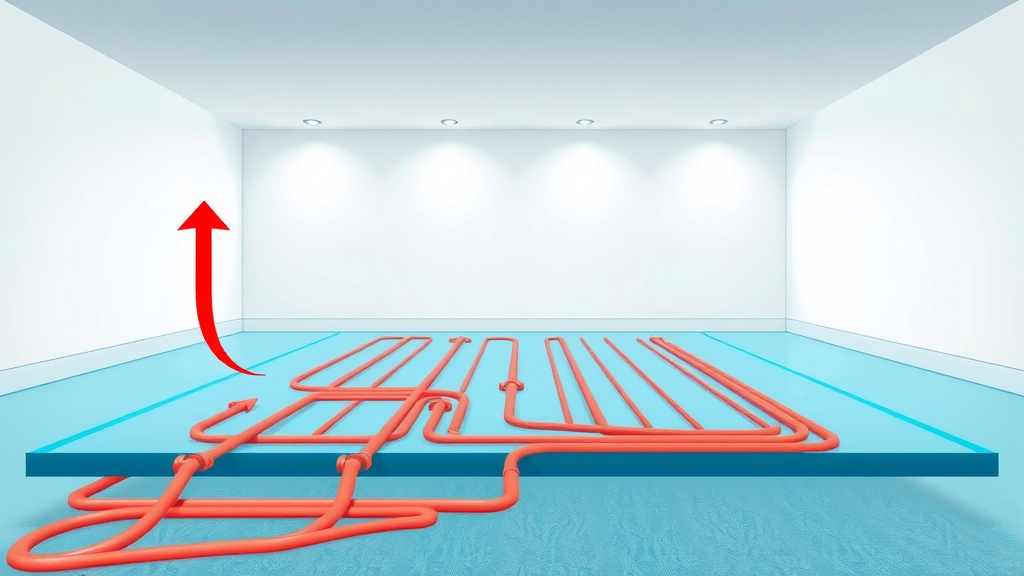
Underfloor heating is a heating system that uses a network of heating pipes (water-fed hydronic systems) or electric cables installed beneath your floor. Instead of circulating warm air or relying on hot radiators, underfloor heating gently radiates warmth upwards, creating a consistent and comfortable environment. Designed for highly energy efficient performance, these systems operate at low flow temperatures, often between 35°C and 45°C, making them a perfect partner for modern heat pumps. Whether you choose wet (hydronic) or electric versions, underfloor heating provides a highly efficient, invisible, and luxurious way to heat your home.
The biggest benefit is how the heat is distributed: the entire surface of your floor acts as a gentle radiator, so you experience even warmth in every corner. Not only does this improve comfort, but it also supports better energy savings—especially when teamed with low-temperature systems like air source or ground source heat pumps. By moving away from high-temperature radiators, you open the door to highly efficient, low flow temperature heating, putting you in control of costs and climate impact.
How Does a Heat Pump Work with Underfloor Heating?
A heat pump is a renewable energy device that extracts heat from the outside air (air source) or from the ground (ground source) and delivers it to your home at a usable temperature. Unlike gas boilers, which burn fuel to generate heat, heat pumps move existing energy from one place to another, making them highly efficient—often delivering three to four times more energy than they consume. The magic happens when this technology is matched with underfloor heating systems. Since underfloor systems use large surface areas and only require low water temperatures, they’re the ideal match for a heat pump’s low flow temperature settings.
Combining a heat pump with underfloor heating means your system works optimally, using less energy to achieve a comfortable interior. The result? Lower running costs, less energy use, and a dramatic reduction in household carbon emissions. This setup leverages the strength of renewable technologies—delivering continuous, gentle heat that outperforms older traditional radiators, especially in well-insulated homes.
Types of Heat Pumps: Air Source and Ground Source
The two main types of heat pumps for underfloor heating are air source heat pumps (ASHP) and ground source heat pumps (GSHP). Air source heat pumps extract heat from the ambient air, even when temperatures are near freezing. These units are popular in the UK due to their easier installation, lower upfront costs, and compatibility with most properties. Ground source heat pumps, on the other hand, draw warmth from the ground using a network of buried pipes; they offer even greater efficiency, especially during colder periods, but have higher installation requirements—like garden space for the pipework.
Choosing between air source heat pumps and ground source heat pumps will depend on your property, budget, and energy goals. Both are excellent matches for underfloor heating systems, supporting reliable, consistent warmth with maximum efficiency. The table below illustrates the main differences:
| Feature | Air Source Heat Pump | Ground Source Heat Pump |
|---|---|---|
| Source of Heat | Extracts heat from the air | Extracts heat from the ground |
| Installation | Simpler, less disruptive | Requires garden/land for pipes |
| Efficiency (COP) | ~3.0-3.5 (varies by temp) | ~3.5-4.5 (more stable output) |
| Initial Cost | £7,000–£12,000 on average | £14,000–£24,000 on average |
| Best for | Most UK homes, retrofits, limited outdoor space | Larger properties, new builds, homes with outdoor space |
How Underfloor Heating with Heat Pump Maximises Energy Efficiency
Energy Efficiency Advantages of Underfloor Heating Systems

Underfloor heating systems are engineered for energy efficiency, and they’re at their very best when run at low flow temperatures. Because the entire floor is used as a heat emitter, the system spreads warmth evenly—eliminating cold spots and needing less energy than conventional radiators. When coupled with a heat pump, underfloor heating’s low temperature demands let the pump perform at its most efficient, with COP (Coefficient of Performance) levels often triple those of older systems. This means you get more usable heat from every kilowatt consumed.
For households aiming to cut down on their carbon footprint, underfloor heating systems with a heat pump deliver substantial improvements. These highly efficient systems not only reduce energy bills but also operate almost silently and are virtually invisible, giving you more flexibility with furnishing and décor. The low running costs make them appealing for both retrofits and new builds, and government incentives can help offset installation expenses, making energy efficiency accessible and financially attractive for many UK families.
How Heat Pumps and Underfloor Heat Complement Each Other
The synergy between heat pumps and underfloor heating is unmatched. Traditional heating systems such as gas boilers or electric heaters rely on high flow temperatures and create uneven warmth. In contrast, underfloor heating paired with a heat pump utilises a low flow temperature, resulting in gentle, sustained heat at a fraction of the energy cost. Modern floor heating systems use less water and distribute energy with precise control, helping heat pumps reach their full potential—and allowing both systems to last longer with fewer maintenance needs.
Because heat pumps work most efficiently at low temperatures, underfloor heating’s ability to produce comfort using low-temperature water makes this combination ideal. It is this integration of systems that enables households to achieve the ‘gold standard’ in both luxury and energy efficient living, outperforming most traditional heating methods.
Key Differences from Traditional Heating Systems
When comparing underfloor heating with heat pump to traditional radiator-based or electric heating systems, the differences are significant. Radiators operate at high temperatures, making them less compatible with renewable energy systems like heat pumps. In addition, radiators typically heat the air near them first, causing ‘cold spots’ and uneven comfort. Underfloor heating delivers warmth where you need it—at your feet—ensuring even distribution across the entire room.
This combination also stands out due to its environmental credentials. By using low-temperature renewable heat, these systems drastically reduce the use of fossil fuels in a typical home, and help future-proof properties against upcoming regulations and energy price increases. The installation might seem more involved at first, especially in older homes, but the return on investment—improved comfort, lower bills, and higher property values—is significant and lasting.
"Modern heating systems, particularly those pairing underfloor heating with a heat pump, are game changers for sustainable homes." – Peak Underfloor Heating Ltd Expert
Selecting the Right Heat Pump for Your Underfloor Heating System
Choosing Between an Air Source Heat Pump vs Ground Source Heat Pump
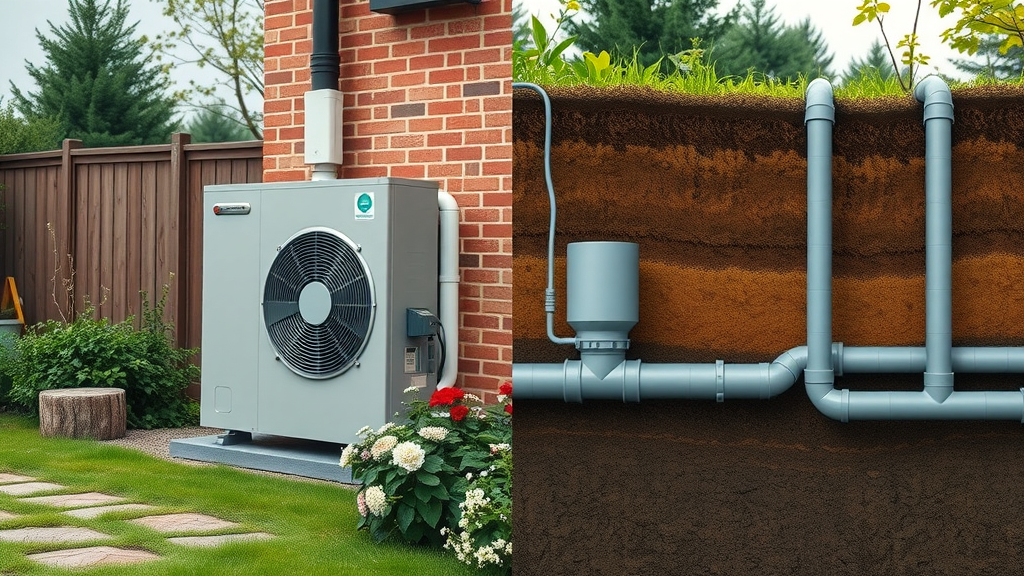
Deciding on an air source heat pump or a ground source heat pump for your underfloor heating system depends on key factors such as property type, available outdoor space, budget, and efficiency goals. Air source heat pumps are compact, adaptable, and easier to install—making them ideal for most homes in the UK, especially when retrofitting or working with limited garden space. They operate by extracting heat from the air and can function effectively even during colder UK winters, especially when combined with a well-insulated underfloor heating system.
Ground source heat pumps involve burying loops of pipes in your garden to extract consistent ground heat. While more costly upfront, their stable year-round efficiency and longer lifespan can offer better returns for larger homes or new builds with the necessary space. Both types are suitable for use with underfloor heating systems, but the right choice depends on a thorough assessment of your property, heating needs, and preferences. Consulting with certified professionals like Peak Underfloor Heating Ltd ensures your investment is perfectly matched to your home’s requirements.
Factors Affecting Heat Pump Performance with Underfloor Heating
The performance of a heat pump with underfloor heating depends on several factors. Insulation quality is at the top of the list: well-insulated homes allow the pump to maintain low flow temperatures, ensuring both efficiency and comfort. Floor construction, heat loss calculations, and the area available for the system all play critical roles in determining the right setup and sizing. Additionally, your choice between an air source or ground source heat pump also dictates installation complexity, running costs, and ongoing maintenance requirements.
To maximise efficiency, it’s essential to have a bespoke design tailored to your property’s unique needs, alongside expert advice on integrating these technologies. Professional installation ensures components are precisely sized and specified for your home. When systems are correctly matched, you enjoy reliable operation, lower running costs, and consistently comfortable temperatures all year round.
Professional Tips for System Sizing and Compatibility
Proper sizing and compatibility are non-negotiable for getting the most out of your underfloor heating with heat pump. A qualified heating engineer will carry out detailed heat loss calculations, select the best system for your property, and recommend insulation upgrades if needed. Oversized or undersized heat pumps fail to achieve the right balance of efficiency and comfort, leading to increased energy usage or insufficient warmth. The best results come from a holistic approach—incorporating property layout, floor coverings, thermal mass, and integration with renewable energy sources for a tailored, future-proof solution.
Before the installation, always seek out expert advice and arrange professional survey visits. This investment pays off quickly with trouble-free operation and true peace of mind for years to come. Engaging accredited installers—such as Peak Underfloor Heating Ltd—guarantees systems that meet the highest standards for efficiency, safety, and durability.
Best Practices for Installing Underfloor Heating with Heat Pump
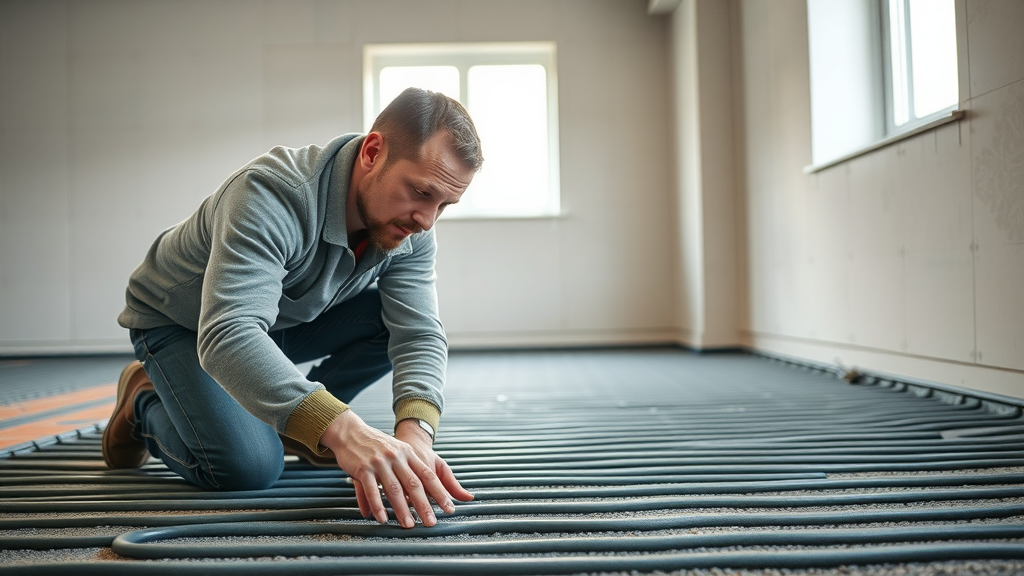
Installation Steps for Combining Underfloor Heating and Heat Pump
Installing underfloor heating with a heat pump involves several key steps to ensure safe, efficient, and lasting results. First, a comprehensive survey is conducted to assess your home’s layout, insulation, and suitability for the selected heat pump system. Next, the underfloor heating network—either wet pipes or electric mats—is installed below the finished floor surface. For hydronic systems, the flow temperature is set to match the heat pump’s efficiency sweet spot (usually between 30°C and 50°C), maximising energy savings and comfort.
The heat pump (air source or ground source) is then installed and integrated with the new or existing heating infrastructure, ensuring seamless controls and smart thermostatic management. Professional commissioning and balancing of the system follow, guaranteeing even heat distribution across all floor zones. A quality installation prioritises neat pipework, robust insulation, and system checks that verify everything operates at optimum efficiency before your new heating is switched on.
Retrofitting Underfloor Heat into Existing Homes
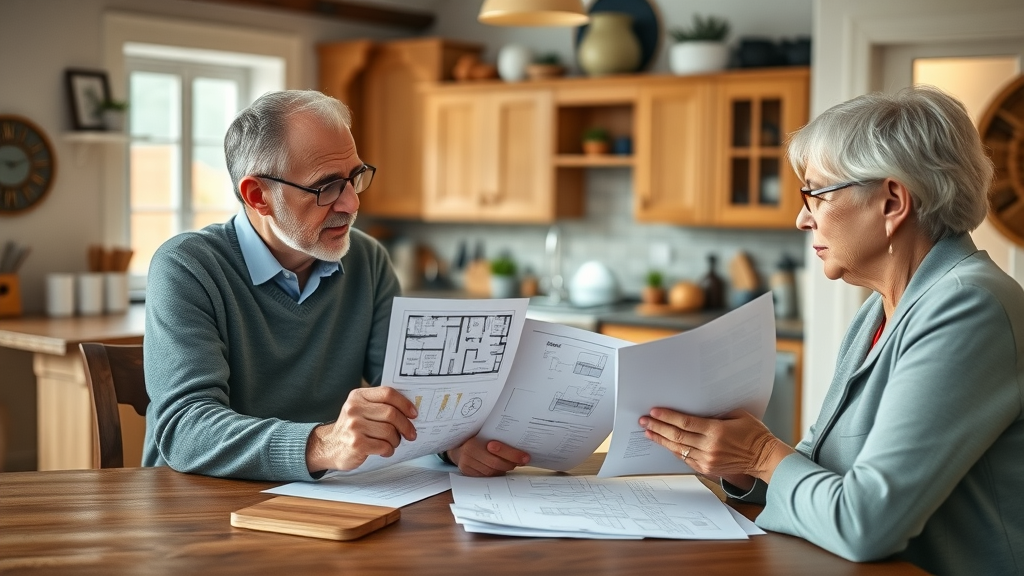
Retrofitting underfloor heating into existing homes is increasingly popular as more property owners seek energy efficient solutions. The process starts with a detailed survey and consideration of floor build-up and insulation. Modern solutions allow even homes with solid floors or heritage features to benefit from underfloor heating and a heat pump, thanks to low-profile installation systems and advanced control technology. Planning is key: work with specialists to select appropriate heat pump units, system layouts, pipe or mat placement, and floor coverings for the best results.
Most retro-fit projects can be completed with minimal disruption by experienced teams, who will make every effort to preserve your property’s character and finish. The result is a home that’s warmer, more comfortable, and much cheaper to run—backed up by the latest smart controls and long-term manufacturer warranties for peace of mind.
What Sets Professional Installations Apart
While DIY approaches may seem tempting, professional installation of underfloor heating with a heat pump is essential for reliability, safety, and efficiency. Accredited installers like Peak Underfloor Heating Ltd offer tailored system designs, utilise premium components, and carry out rigorous checks to ensure the system is perfectly balanced for your property. The difference lies in attention to details—correct insulation, hydraulic balancing, and integration with existing heating systems and renewable energy sources.
Professionals also manage compliance with building regulations, provide extended warranties, and offer comprehensive aftercare support. Investing in accredited expert installation protects your peace of mind and property value, and ensures your home will enjoy the full benefits for years to come.
"A precisely installed underfloor heating system delivers unrivalled comfort, efficiency, and property value." – Peak Underfloor Heating Ltd
- Assess insulation levels and property heat loss
- Choose the right type and size of heat pump
- Select underfloor heating system best suited to your flooring type
- Consider control systems for smart temperature management
- Work with experienced, accredited installers
Cost Breakdown: Installing Underfloor Heating with Heat Pump
Initial Investment vs Long-Term Savings

The initial cost of installing underfloor heating with a heat pump may seem significant, but the long-term savings can be substantial. For a typical three-bedroom UK home, installation starts around £10,000 for air source heat pump systems and can reach up to £20,000 or more for ground source heat pump options. However, the resulting reduction in annual energy bills—combined with government incentives, lower maintenance, and increased property value—means you can recoup your investment within a few years.
Energy bills for homes with underfloor heating and heat pumps are often 30–50% lower than households using standard gas boilers. Over the 15–20-year lifespan of a well-maintained system, these savings add up, making the combination a smart financial and environmental choice for future-minded homeowners.
Table: Estimated Costs – Installation, Operation & Maintenance
| System | Installation Cost | Annual Running Cost | Maintenance Cost (Annual) | Lifespan |
|---|---|---|---|---|
| Underfloor Heating + Air Source Heat Pump | £10,000–£15,000 | £600–£900 | £150–£250 | 15–20 years |
| Underfloor Heating + Ground Source Heat Pump | £18,000–£25,000 | £400–£700 | £150–£250 | 20–25 years |
| Traditional Boiler & Radiators | £5,000–£8,000 | £1,200–£1,800 | £100–£200 | 10–15 years |
Government Incentives and Financing Options
UK homeowners retrofitting with underfloor heating and heat pumps can take advantage of several government incentives, including Boiler Upgrade Scheme grants and zero VAT on energy saving materials. Financing plans and energy supplier schemes also help spread installation costs. Eligibility for incentives is often tied to insulation levels and system efficiency, so discuss your options with an accredited installer to maximise your savings while meeting compliance requirements.
Many financing programs also offer repayments at low, fixed interest rates, further boosting savings and making it easier for more households to achieve modern, sustainable heating. Ask Peak Underfloor Heating Ltd for the latest guidance on active grants and funding opportunities bespoke to your project.
Benefits of Combining Underfloor Heating with Heat Pump
- Lower running costs compared to traditional systems
- Higher comfort levels and even temperatures
- Reduced carbon emissions and greener energy use
- Increased property value and future-proofing
- Silent, unobtrusive operation with enhanced lifestyle appeal
"Combining an air source heat pump with underfloor heating transforms your home into a model of energy efficiency and luxury."
Potential Drawbacks and Solutions for Underfloor Heating with Heat Pump
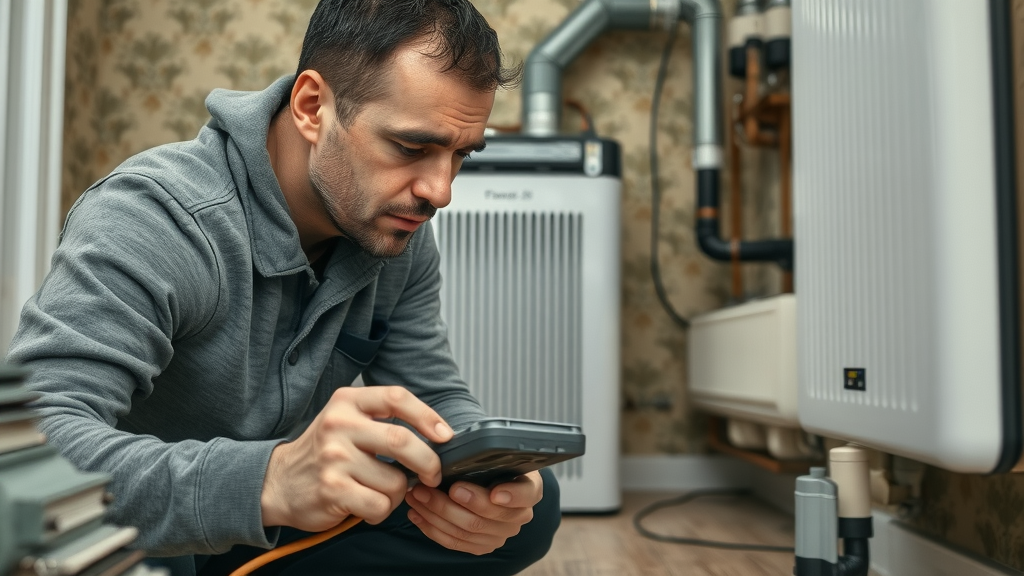
Overcoming Installation Challenges in Older Homes
Older homes can pose certain challenges for underfloor heating with a heat pump, including thicker sub-floors, heritage features, or limited insulation. However, modern retrofit systems and low-profile solutions mean almost any home can be upgraded. Improving insulation, planning carefully around floor coverings, and using expert installation teams lets you achieve impressive results even in period properties. Property owners should always engage experienced specialists to avoid pitfalls and protect both comfort and the unique character of older homes.
If your home has high heat loss or solid stone floors, a tailored design and appropriate insulation upgrades are essential. Professional surveys will identify suitable solutions, such as above-ground systems, secondary glazing, or the strategic use of thermal boards.
Addressing Heat Pump Performance in Cold Climates
In colder UK regions or during severe weather snaps, air source heat pumps may lose some efficiency, but modern models can still deliver reliable warmth when matched with well-designed underfloor heating. For homes needing even greater performance, ground source heat pumps offer consistently high output irrespective of outdoor temperature. Upgrading your property’s insulation and using smart controls helps maintain comfort and system efficiency even during harsh winters. Some hybrid systems can incorporate backup heating for rare extreme lows, giving you total peace of mind all year round.
- Upgrade insulation in floors, walls, and roof spaces
- Choose low-profile or “dry” installation systems for retrofits
- Consider hybrid solutions for backup in extreme conditions
- Set up smart zoning and programmable controls
- Regular expert maintenance to ensure peak efficiency
Expert Insights: What the Industry Says about Underfloor Heating and Heat Pump Systems
"This pairing is the future of residential heating—efficient, sustainable, and adaptable to most UK homes."
Interview with a Peak Underfloor Heating Ltd Specialist
According to the experts at Peak Underfloor Heating Ltd, less than a decade ago, the idea of fully electrified heating was considered ambitious for retrofits. Now, the combination of underfloor heating with a low temperature heat pump is seen as the pinnacle of efficiency and comfort. “With systems tailored to each home, even Victorian-era properties can enjoy consistent warmth, lower bills, and a healthier living environment. The key is personalised design and flawless installation,” notes their technical lead. Their advice is clear: always work with experienced professionals, ask lots of questions, and don’t cut corners with insulation or system sizing.
The company’s engineers also stress the importance of aftercare and servicing for maintaining peak operation. With professional support, both property owners and their consultants can ensure the system’s benefits are felt for decades—making it a compelling long-term investment in your family’s comfort.
Key Takeaways for Homeowners and Professionals
For property owners, the main takeaways are clear: combining underfloor heating with a heat pump saves money, increases comfort, and protects the environment. Professionals overseeing these projects should invest time in surveys, design calculations, and compliance checks. Engage installers who are accredited to the latest standards, and always factor in available incentives. With the right support, both new builds and retrofits can achieve impressive, enduring results.
People Also Ask: Underfloor Heating with Heat Pump
Can you run underfloor heating with a heat pump?
Answer: Yes, underfloor heating works exceptionally well with heat pumps, especially low-temperature systems. This pairing maximises efficiency and delivers outstanding comfort throughout your home.
What houses are not suitable for heat pumps?
Answer: Homes with poor insulation, high heat loss, or insufficient space for external units may be less suitable for certain types of heat pumps, particularly air source heat pumps. Retrofitting or insulation improvements can often resolve these challenges.
What does Martin Lewis say about air source heat pumps?
Answer: Martin Lewis highlights the importance of proper insulation and government incentives for maximising the effectiveness and value of air source heat pumps, especially when paired with underfloor heating.
How much to install a heat pump and underfloor heating?
Answer: Installation costs vary depending on property size and type, system selection, and complexity of the retrofit, but typical ranges are between £10,000-£20,000 for a complete underfloor heating with heat pump solution.
Frequently Asked Questions: Underfloor Heating with Heat Pump
-
Is underfloor heating with a heat pump suitable for upstairs rooms?
Yes, with proper design and installation, underfloor heating can be fitted to both ground and upper floors. Lightweight systems are available for structural compatibility. -
How long does installation take?
Most installations are completed within one to two weeks for an average-sized home, though complex retrofits may take longer. -
What maintenance does the system require?
Annual servicing is recommended for both the heat pump and underfloor heating network. Tasks include performance checks, pipe flushing, and system rebalancing. -
Can I use existing boilers with a new underfloor heating system?
While you can connect underfloor heating to some modern boilers, pairing with a heat pump unlocks the highest efficiency and comfort gains. -
Will I need planning permission for installation?
In most cases, underfloor heating and air source heat pump installations fall under permitted development, but check with your local authority, especially for listed or conservation properties.
Key Takeaways: Underfloor Heating with Heat Pump
- Underfloor heating with heat pump maximises efficiency and comfort.
- The system is adaptable for both new builds and retrofits.
- Cost savings are substantial over the system’s lifespan.
- Engage certified professionals like Peak Underfloor Heating Ltd for the best results.
Conclusion: Transform Your Home with Underfloor Heating and a Heat Pump
Choosing underfloor heating with a heat pump is a forward-thinking upgrade for any UK home. With the right advice, professional installation, and quality components, you can enjoy a more comfortable, efficient, and future-proof property for years to come.
Ready to Upgrade? Contact Peak Underfloor Heating Ltd for Expert Advice and Installation
- No obligation quotation
- Tailored designs for every property
- Trusted, accredited engineers
- Comprehensive aftercare and support
Sources
- Peak Underfloor Heating Ltd – https://www.peakunderfloorheating.co.uk/
- Energy Saving Trust – https://energysavingtrust.org.uk/advice/underfloor-heating/
- Which? – https://www.which.co.uk/reviews/ground-source-heat-pumps/article/ground-source-heat-pumps-explained-aPl9f7Z6dyKr
- Gov.uk: Boiler Upgrade Scheme – https://www.gov.uk/guidance/check-if-you-may-be-eligible-for-the-boiler-upgrade-scheme
- MoneySavingExpert, Martin Lewis – https://www.moneysavingexpert.com/utilities/heat-pumps/
Pairing underfloor heating with a heat pump is an effective strategy to enhance your home’s energy efficiency and comfort. Underfloor heating systems operate at lower temperatures, typically between 35°C and 45°C, which aligns perfectly with the optimal performance range of heat pumps. This synergy allows the heat pump to function more efficiently, leading to significant energy savings and a consistent, comfortable indoor environment.
For a comprehensive understanding of this combination, consider reading “Considering underfloor heating? How to choose the right system for your project.” This resource delves into the benefits of underfloor heating, including its energy efficiency and design flexibility, and discusses how it complements heat pump systems.
Additionally, “Lessons from a heat pump convert” offers a firsthand account of integrating an air-source heat pump with underfloor heating during a home renovation. The article highlights practical considerations, challenges faced, and the resulting benefits, providing valuable insights for homeowners contemplating this upgrade.
If you’re serious about enhancing your home’s heating efficiency and comfort, these resources will provide you with the necessary information to make an informed decision.
 Add Row
Add Row  Add
Add 






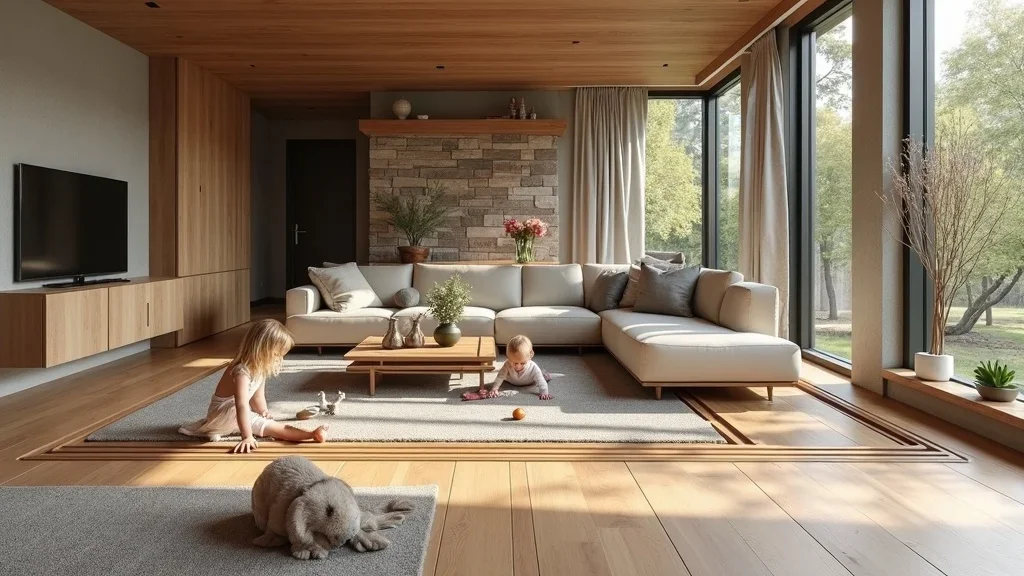


Write A Comment